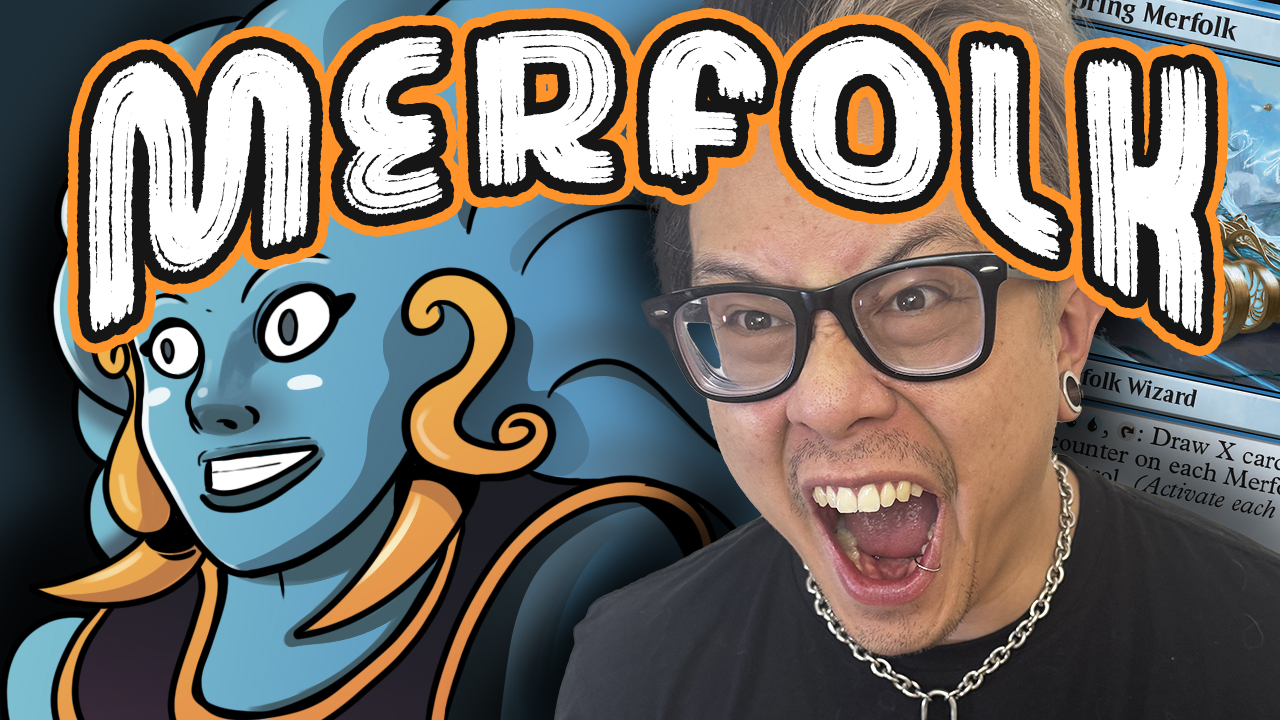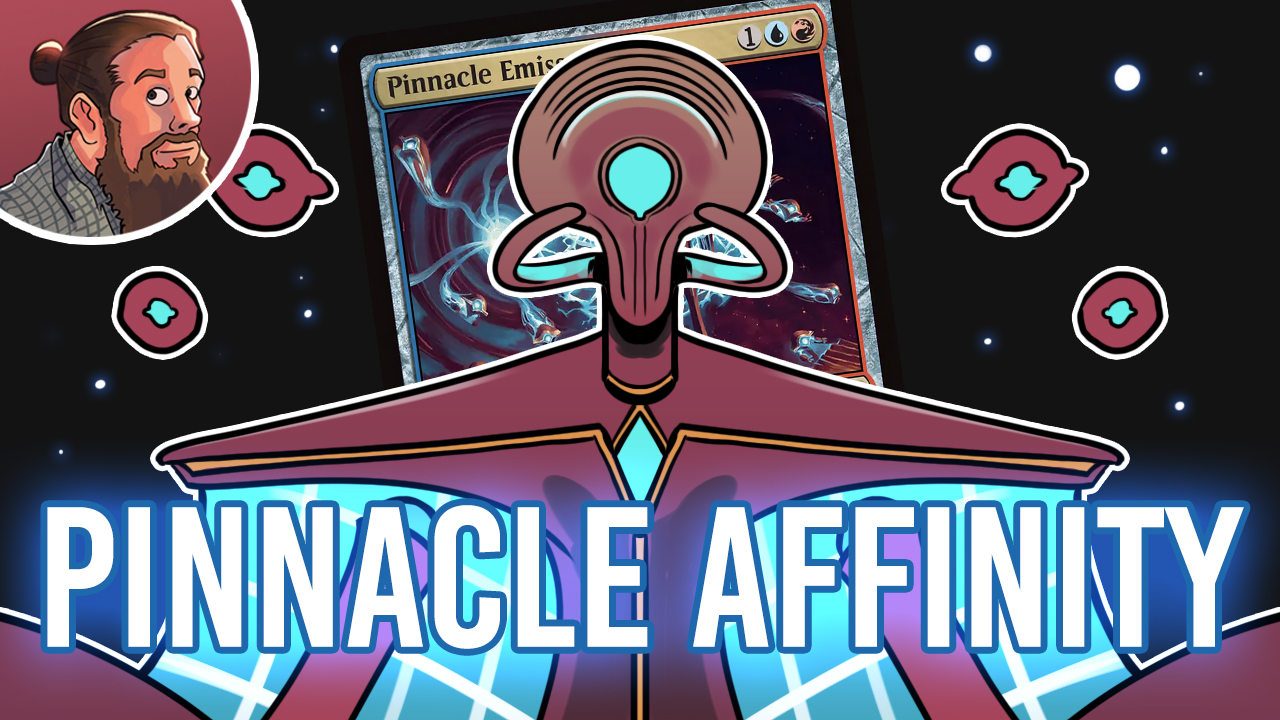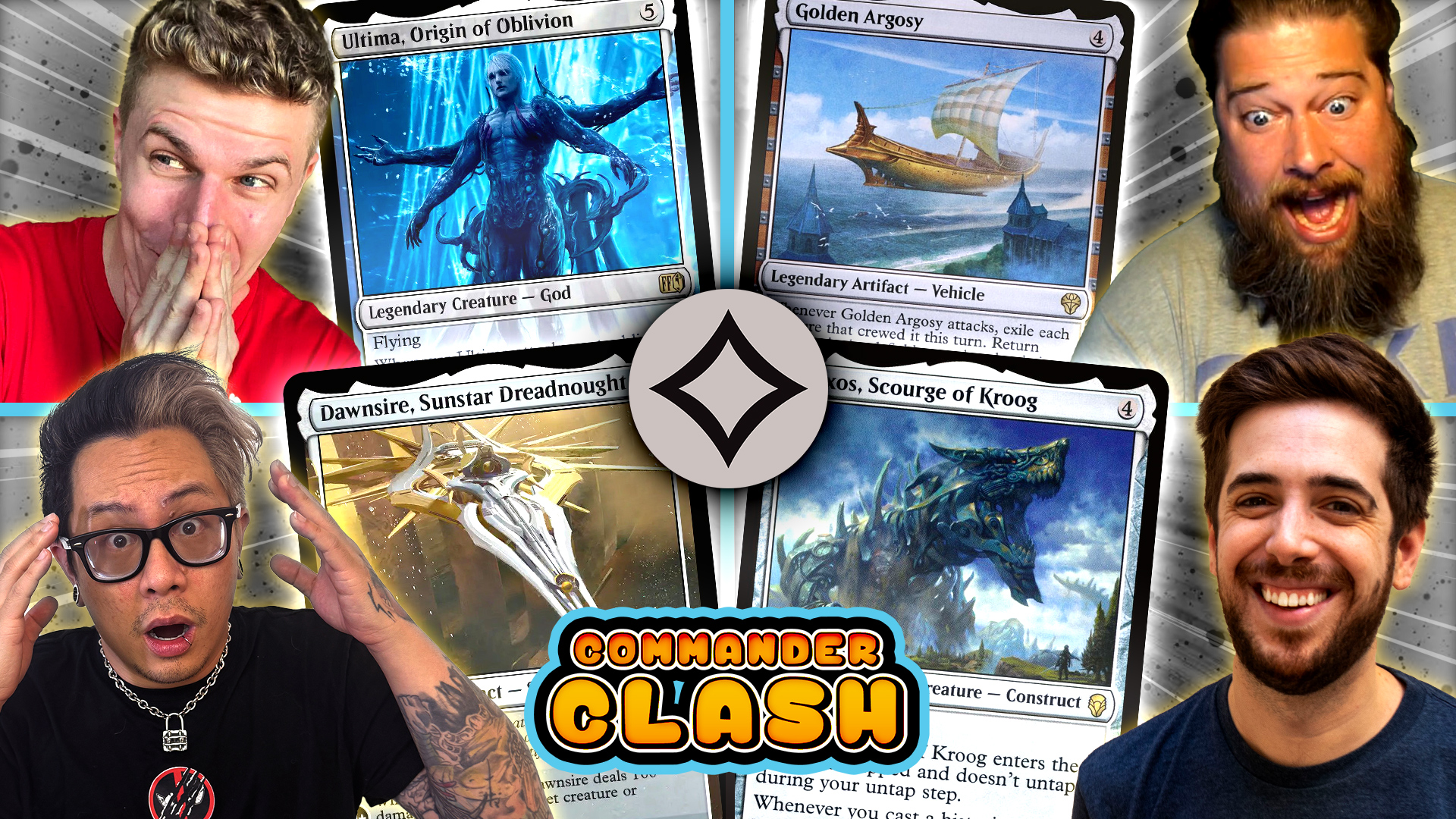Budget Magic: $76 (26 tix) Turbo Fog (Standard)
Dydh da, Budget Magic lovers, it's that time again! When Amonkhet was released, one of the first decks I tried to build was Turbo Fog. The archetype seemed like it had a lot of potential because Amonkhet is overflowing with powerful cards that support the deck. Unfortunately, the deck was basically unplayable. While we could crush Zombies and Vehicles, Ulamog, the Ceaseless Hunger is a nightmare because no matter how many times we Fog it, it still eats away our library and wins our opponent the game. Even worse, Ulamog, the Ceaseless Hunger was everywhere thanks to the popularity of Aetherworks Marvel, but that all changed last week when Wizards banned the artifact, which means we can finally get to work Fogging our opponents out in Standard. While the format is still in flux, Turbo Fog doesn't just look playable against the most popular decks in Standard; it actually seems extremely well positioned, with Ulamog, the Ceaseless Hunger nowhere to be found, control decks on the downswing, and just about every popular deck looking to win either exclusively or primarily with creatures! Is it time for Turbo Fog to shine in Standard? Let's get to the videos and see, and then we'll talk more about the deck.
First, a quick reminder: if you enjoy the Budget Magic series and the other video content on MTGGoldfish, make sure to subscribe to the MTGGoldfish YouTube Channel to keep up on all the latest and greatest.
Turbo Fog Deck Tech
Turbo Fog vs. Mono-Black Zombies (Match 1)
Turbo Fog vs. Temur Energy (Match 2)
Turbo Fog vs. Gearhulk Reanimator (Match 3)
Turbo Fog vs. Mono-White Humans (Match 4)
Turbo Fog vs. GB Energy (Match 5)

The Deck
The basic idea of Turbo Fog is pretty simple: once our opponent gets some creatures on the battlefield, we cast a Fog every single turn, making it impossible for our opponent to kill us with combat, and then we figure out a way of winning eventually. Apart from the Fogs and a couple of finishers, the rest of the deck is filled with card draw (to make sure we have a Fog each turn) and a few removal spells and counters designed to beat specific problematic cards or card types that don't really care about our Fogs.
The Fogs



All in all, we have a total of 11 Fogs in our deck, with four copies of Commencement of Festivities, four Haze of Pollen, and three Encircling Fissure. While all of these cards have slightly different wordings, they are pretty much interchangeable, and we don't really care which version of Fog we have in hand as long as we have one. Technically, Haze of Pollen is the best because we can cycle it away in a pinch, but most of the time we are trying to draw Fogs, not turn Fogs into other cards. In theory, Encircling Fissure has an upside of awakening a land, but it's usually best to ignore that mode because we want as much mana as possible, so turning a land into a creature that dies to removal is often really a downside.
The important thing about our Fogs isn't which one we have; it's that we have one every single turn. One of the interesting aspects of playing Turbo Fog is that, in the late game, we can't miss having a Fog for even a single turn or we just lose the game on the spot because our opponent will have a huge board full of creatures. Because of this, our decision making often revolves around how we can draw as many cards as possible (in the hopes of finding a Fog) while still leaving up enough mana to cast a Fog if we draw one.


While Fumigate and Descend upon the Sinful are technically wraths, in our deck it's best to think of them as double Fogs. The great thing about Fogs is that they don't care how many creatures our opponent has on the battlefield because all of the damage will be prevented. Because of this, having a wrath on Turn 5 or 6 isn't really essential in our deck. However, there is a huge benefit to having a couple of wraths that we can draw into; if we can sweep away all of our opponent's creatures with a Fumigate or Descend upon the Sinful, this often buys us a one-turn window where we don't need to Fog, which lets us spend all of our mana on other things (usually drawing cards to make sure we have more Fogs for the following turn). Fumigate also has the upside of gaining us a bit of life, which is sometimes pretty important to make sure we stay out of range of random burn spells, while Descend upon the Sinful works like a backup finisher thanks to the 4/4 Angel token we get with delirium.
Card Draw


For the turbo fog plan to work, we need to draw enough cards so that we have a Fog in hand every turn, which leads us to Fevered Visions and Bounty of the Luxa. Fevered Visions not only draws us a card every turn but also works as a finisher by pinging our opponent to death two damage at a time. More importantly, it gives us a way to deal with planeswalkers (which can be a problem, since they don't care about Fogs). Meanwhile, Bounty of the Luxa only gives us a card every other turn, but the extra mana it produces sometimes come in handy. Together, our card-draw enchantments help us brute-force card draw our way into all the Fogs we need.

Commit // Memory does double duty in our deck. The front half is helpful in keeping planeswalkers off the table or winning counter battles to force through our Fogs, but the real reason Commit // Memory is in our deck is thanks to its aftermath ability. Memory is one of the biggest reasons to play Turbo Fog, since it gives us a way to not just refill our entire hand but also shuffle all of the Fogs we've already used back into our deck. If we can time things right, we can also take advantage of the extra mana from Bounty of the Luxa to help aftermath Memory, which allows us to leave up the rest of our mana to cast whatever Fogs, wraths, or removal spells we happen to draw into.
The Finishers


While we sometimes win games thanks to Fevered Visions, we also have a couple of dedicated finishers in our deck. Kefnet the Mindful is amazing. Our deck draws a ton of cards, which means we usually do a good job of hitting our land drops. As such, in the late game, we can often activate Kefnet the Mindful a couple of times each turn to draw even more cards to make sure we keep hitting our Fogs. Eventually, we can go on the offense with Kefnet the Mindful, attacking for five in the air and closing out the game in just four attacks.
As for Approach of the Second Sun, it gives us a way to win the game that doesn't care about life totals or blockers and doesn't care about Cast Out or Dark Salvation, which can deal with Kefnet. Gaining seven life the first time we cast it is a nice bonus and helps make sure we stay out of range of various burn spells like Incendiary Flow and Fiery Temper. After that, we usually draw back into Approach of the Second Sun in just two or three turns thanks to our Fevered Visions, Kefnet the Mindful, and Bounty of the Luxa; cast it again; and win the game!
Walking Ballista Answers



We'll talk more about the matchups during the wrap-up, but there are two cards / groups of cards that are problematic enough that we built answers into our deck. The first is Walking Ballista. Generally speaking, our deck doesn't care about what creatures our opponents play. Gideon, Ally of Zendikar, Verdurous Gearhulk, Grim Flayer, Winding Constrictor, and nearly all of the other best creatures in Standard can't get past our Fogs, but Walking Ballista can, and the artifact is currently the second most played creature in Standard.
The problem with Walking Ballista is that it doesn't need to attack to kill us, and while we are stalling out the game with our Fogs, our opponent can just spend all of their mana putting counters on Walking Ballista, which will eventually ping us to death. As such, Essence Scatter is in the deck only to counter Walking Ballista—in non-Ballista matchups, we can spend it on something else, but if our opponent has Walking Ballista in their deck, we want to hold our Essence Scatter for as long as possible. Gideon's Intervention, meanwhile, can stop Walking Ballista and locks down opposing planeswalkers as well. Speaking of planeswalkers...
Planeswalker Answers


The other main challenge with Turbo Fog is planeswalkers (especially planeswalkers like Chandra, Torch of Defiance or Ob Nixilis Reignited, which don't care about Fogs—planeswalkers like Gideon, Ally of Zendikar and Nissa, Voice of Zendikar aren't really a problem because they act like creatures). While this isn't a massive concern at the moment, both Temur Energy and Mardu Vehicles tend to play Chandra, Torch of Defiance, and Mardu Vehicles sometimes has Ob Nixilis Reignited in the sideboard as well. Negate and Cast Out give us an answer to these planeswalkers, and both can hit other less-played but annoying win conditions like Approach of the Second Sun and Fevered Visions as well.
Burn Answers

Once we lock creatures out of the game with Fogs, Walking Ballista with Essence Scatter or Gideon's Intervention, and planeswalkers with Cast Out or Negate, the last way we can lose is burn spells. Thankfully, there isn't much "real" burn played in Standard at the moment, but every once in a while, we'll run into a deck with Fiery Tempers and Incendiary Flows. The challenge with Burn is that we make our opponent draw a lot of cards with Fevered Visions, so even if they don't have a ton of burn, they'll likely draw into what they do have eventually, and if they can get in some early creature beats before we start casting our Fogs, it's possible they can burn us out. Nissa's Renewal (along with Approach of the Second Sun) helps close this door by gaining us enough life that we can't get burnt out, and getting some lands out of our deck is helpful as well because it improves out odds of drawing Fogs each turn.
The Mana


By far the biggest challenge of building Turbo Fog was making the four-color mana base work on a budget, and we had to make some painful choices to make it functional. Attune with Aether is horrible in our deck (mostly because it makes our Commit // Memory worse, since Attune with Aether shuffles back into our deck while a land would not, since it would be on the battlefield), but it's also extremely necessary because we need Aether Hub to be able to cast our spells and we don't have any other sources of energy. Otherwise, we have a handful of cycling lands, which can help us dig for a Fog if we are desperate and also helps us turn on delirium for Descend upon the Sinful. Surprisingly, the mana actually worked pretty well, and while it might be possible to upgrade it a little bit, it's pretty functional as is.
Wrap-Up
We finished our matches 4-1 and played against most of the top-tier Standard decks. Our only loss was to GB Energy, and we were about one turn short from locking our opponent down (it also didn't help that they drew two Walking Ballistas in game three). It really feels like the deck has good matchups against most of the tier decks in the format. Control isn't really heavily played, and Ulamog, the Ceaseless Hunger is almost completely missing from Standard, and those would be two of our harder matchups. More importantly, with the banning of Aetherworks Marvel, a lot of decks have moved away from splashing counterspells (like Mardu Vehicles, for example), which is great for our deck.
If you look over the five most played decks in Standard, it's easy to see how little they have to fight against Turbo Fog. Temur Energy has two copies of Chandra, Torch of Defiance and some number of Negate (which are good but not unbeatable). GB Energy / GB Delirium has Walking Ballista and maybe an Ob Nixilis Reignited in the sideboard, Mardu Vehicles has a handful of sideboard planeswalkers, and Mono-Black Zombies doesn't have anything. Of course, if Turbo Fog catches on, decks can play more things to fight against it, but right now, it seems that the format is in a place where the archetype can really shine!
Ultra-Budget Turbo Fog

Turbo Fog is a weird deck to make ultra-budget because all of the non-land cards are already so cheap. As such, the only realistic way to cut the budget is to trim back on the lands. The biggest problem with this build is that we have a ton of lands that enter the battlefield tapped. The good news is that, apart from changing Fumigate to Planar Outburst, the rest of the deck is exactly like the one we played on the videos, so it still should work fairly well. While some percentage of the time you'll really need an untapped land and end up with a Tranquil Expanse, it matters much less once we make it to the late game. I'd be more than happy playing this build on the kitchen table or even at an FNM-level event but with the knowledge that I might lose an extra game or two because of the tapped land problem.
Non-Budget Turbo Fog


I don't actually have a non-budget build this week—I'm just not sure there are enough upgrades to make it worthwhile. However, we can take a couple minutes to talk about where the deck can go from here from a non-budget perspective. First, as far as direct upgrades, the deck could use another cycling land over Evolving Wilds in the mana base, Disallow over Void Shatter in the sideboard, and maybe the Negate / Essence Scatter package in the main deck as well. Otherwise, I don't think there's a whole lot to change about the deck—it just happens to be cheap. While I'd like to make more substantial upgrades to the mana base (which is the weakest part of the current build), I haven't really figured out a configuration I like better, apart from the extra Scattered Groves over the Evolving Wilds.



On the other hand, if you really want to go wild, it's probably possible to make some really strange Superfriends / Turbo Fog hybrid. Planeswalkers like Nahiri, the Harbinger and Jace, Unraveler of Secrets are more powerful versions of Bounty of the Luxa if we can keep them alive, and ultimating planeswalkers would give us a quicker way of closing out the game. This could work because both Encircling Fissure and Haze of Pollen prevent all combat damage, not just damage dealt to players, so they can actually protect planeswalkers just as well as they protect our life total. The problem is, I'm not 100% sure that playing a bunch of planeswalkers would actually improve the deck, but it would make it different and seems like it could be a fun thing to try.
Conclusion
Anyway, that's all for today. Turbo Fog seems awesome right now, and it really did feel like we had good matchups against pretty much all of the tier decks in Standard. Give it a shot—I don't think you'll be disappointed! As always, leave your thoughts, ideas, opinions, and suggestions in the comments, and you can reach me on Twitter @SaffronOlive or at SaffronOlive@MTGGoldfish.com.













